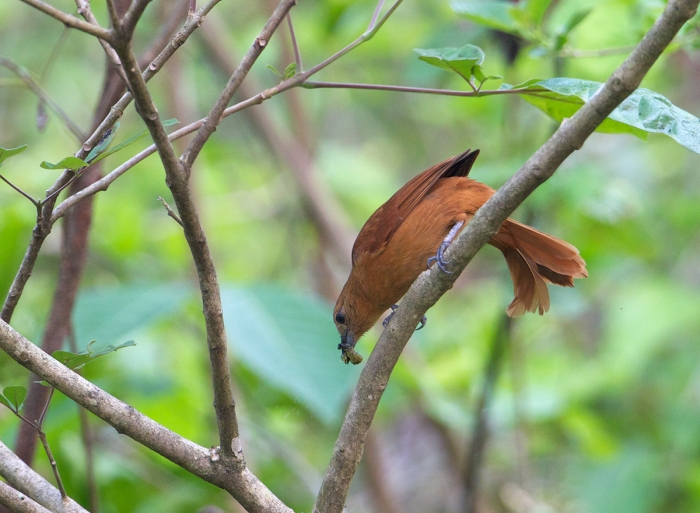Return of Bird of the Week: Silver-beaked Tanager
Yes, still with the tanagers. After all, there may be as many as 240 different species, although WC has so far photographed only a fraction of them.[^1] But staying with the silvery theme, meet the Silver-beaked Tanager.

Silver-beaked Tanager Male, Pantanal, Brazil
The bill is indeed bright silver, distinguishing the species from the Silver-backed Tanager and the Silver-throated Tanager. Maybe it’s a failure of naming imagination. It’s also one of the tougher birds to properly expose in a photograph. The silver, in anything but the lowest light, is almost mirror-like and if you drop the exposure enough to get any detail there, all detail in the black body is lost. A decent photo of the male is an ongoing project. That lower bill isn’t just silvery; it’s also swollen, considerably larger than the upper bill.[^2]
This is another sexually dimorphic tanager. Here’s the female.

Silver-beaked Tanager Female, Pantanal, Brazil
And this species is also pretty good at adapting to human-altered environments. It seems to do well in second growth forest and forest edges. It readily comes to feeders.
It’s also the noisiest of the tanagers that WC has encountered; you hear this species before you see it. WC has rarely seen it in mixed feeding flocks, but it’s pretty common to find the species in flocks of 5-10 birds. It’s another omnivore, eating fruits and insects.
Silver-beaked Tanagers are widely distributed throughout the Amazon Basin. WC has seen them in southern Brazil and in Amazonian Ecuador and points in between. While there is very little data, the consensus seems to be that the population is probably stable.
For more bird photos, please visit Frozen Feather Images.
[^1]: Not all ornithologists agree on the number of species. Not all tanagers are even named tanager. The taxonomy of tanagers, they say, “is in a state of flux.”
[^2]: It’s also wearing a bird band. It’s WC’s own private curse. About 30 of the species WC has photographed are banded.